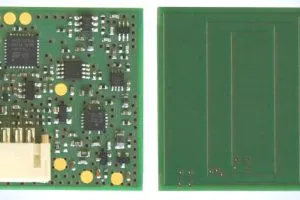
VEML4031X00, as it will be known, has a visible light spectral sensitivity designed to match the human eye, and also includes an ambient infra-red sensor for light source differentiation.
“With an ambient light range from 0 to 172 000 lx, the VEML4031X00 will not saturate in daylight, while its 0.0026 lx/bit sensitivity allows the device to be placed behind dark cover glass,” said Vishay.
Its data output is in the form of a 16bit number scaled by two factors: a gain of x2, x1, x0.66 or x0.5, and one of eight integration time between 3.125 and 400ms (in doubling steps), making a total of 32 possibilities between the most sensitive: the 0.0026 lx/bit (typ) saturating at 168 lx, to 1.32 lux/bit for a max count of 43,000 lx.
This is with the whole photo-diode in use. All 32 sensitivity settings can divided by four by a bit which causes only a quarter of the photodiode to be used instead.
Operation is across -40 to +110°C, 2.5 to 3.6V for its supply and 1.7 to 3.6V for its I2C bus. Shut-down is typically to 500nA.
Use is expected in display backlight controls, rear view mirror dimming, interior lighting and heads-up displays.
Find the VEML4031X00 ambient light sensor on this Vishay product page
Last month, TDK demonstrated an experimental ultra-fast spintronics photo detector that switches on in 20ps, although switch-off is so far considerably slower.
 Electronics Weekly
Electronics Weekly



